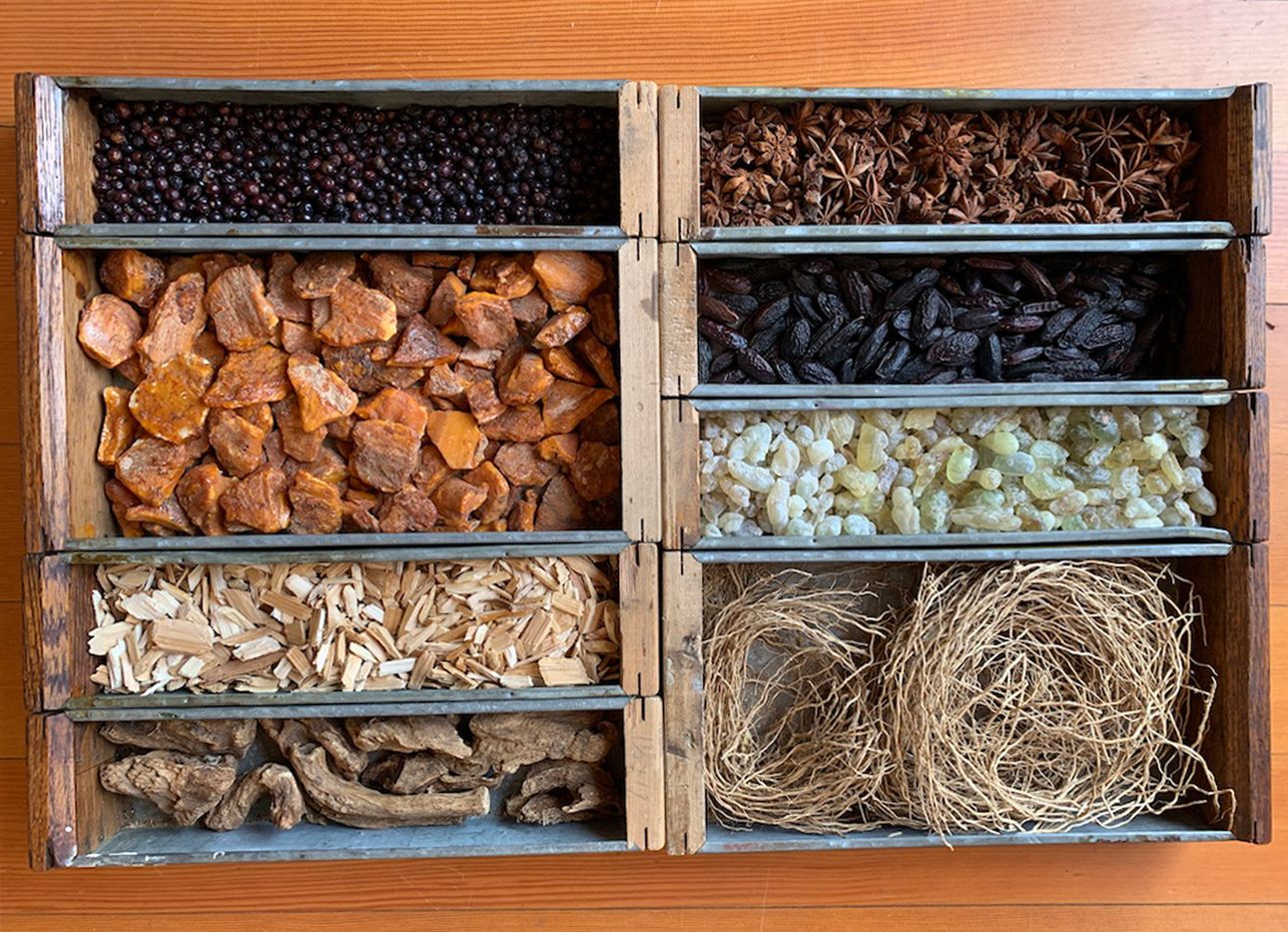
Mandy Aftel’s Willy Wonka–Like Wonderland of Curious Scents
Natural perfume-maker Mandy Aftel was hiking through old ghost towns in California’s Gold Rush country when she found unlikely inspiration in an old folk museum the size of a living room. “There were these little, little personal museums, about the area and about the people that live there,” she says, “and I looked at it one day and thought, I could do that.”
An author of several books, including Essence & Alchemy: A Natural History of Perfume, Aftel has spent much of her career cultivating and sharing her fascination with scent. Creating her own speciality museum, she decided, would open the doors to the scent collection she’s amassed for more than 30 years. In 2017, she launched the Aftel Archive of Curious Scents, the first museum in the U.S. dedicated to perfume, in her North Berkeley cottage situated right behind Alice Waters’s famed Chez Panisse restaurant, a longtime neighbor that also shares a proximity in ethos. In many respects, Aftel has done for perfumes what Waters has done for the Slow Food movement, placing an emphasis on all-natural, high-quality ingredients, and garnering a cult celebrity following along the way. (Madonna, Lucinda Williams, and Leonard Cohen are fans of Aftel’s “Slow Perfumes.”)
One $20 admission fee to Aftel’s museum grants visitors to an hour-long visit and guided experience through the origin, source, and making of scent, with smelling stations that deconstruct the notes of a “chord,” various displays of antique perfume ephemera, rare books about scent, and collections of natural and historic scent specimens. There’s even a stuffed civet on display, standing in for the creature’s secretions that are sourced to produce musk. Among Aftel’s most prized holdings, though, is a century-old sample of ambergris—a solid, waxy substance produced in the digestive system of sperm whales, as described in Moby-Dick, that was cherished for centuries for its sweet, earthy scent. “It’s so unbelievably gorgeous-smelling, it’s just phenomenally beautiful,” says Aftel, who likens the aged specimen to a fine wine or cooking ingredient, with notes of “damp, moss-covered forest ground, but also of exotic woods and spices, faded flowers, and a warm, animal, musky air.”